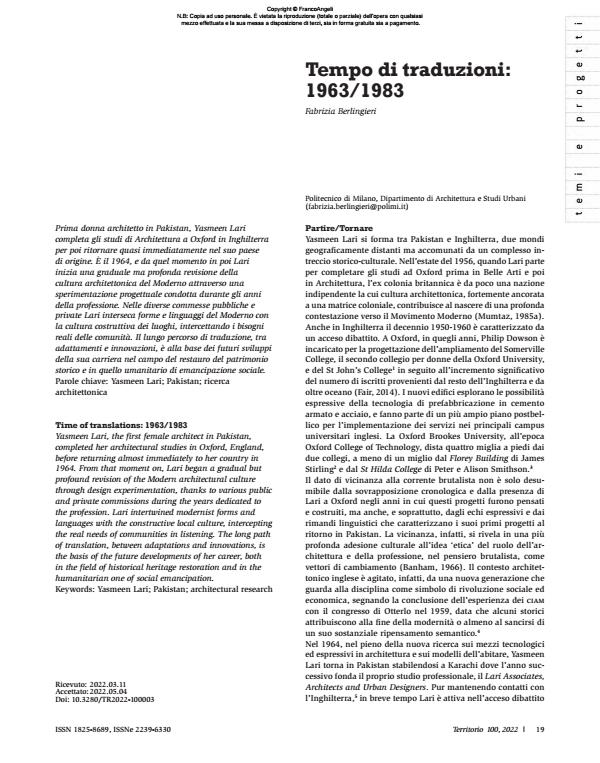Time of translations: 1963/1983
Journal title TERRITORIO
Author/s Fabrizia Berlingieri
Publishing Year 2022 Issue 2022/100
Language Italian Pages 10 P. 19-28 File size 577 KB
DOI 10.3280/TR2022-100003
DOI is like a bar code for intellectual property: to have more infomation
click here
Below, you can see the article first page
If you want to buy this article in PDF format, you can do it, following the instructions to buy download credits

FrancoAngeli is member of Publishers International Linking Association, Inc (PILA), a not-for-profit association which run the CrossRef service enabling links to and from online scholarly content.
Yasmeen Lari, the first female architect in Pakistan, completed her architectural studies in Oxford, England, before returning almost immediately to her country in 1964. From that moment on, Lari began a gradual but profound revision of the Modern architectural culture through design experimentation, thanks to various public and private commissions during the years dedicated to the profession. Lari intertwined modernist forms and languages with the constructive local culture, intercepting the real needs of communities in listening. The long path of translation, between adaptations and innovations, is the basis of the future developments of her career, both in the field of historical heritage restoration and in the humanitarian one of social emancipation.
Keywords: Yasmeen Lari; Pakistan; architectural research
Fabrizia Berlingieri, Tempo di traduzioni: 1963/1983 in "TERRITORIO" 100/2022, pp 19-28, DOI: 10.3280/TR2022-100003